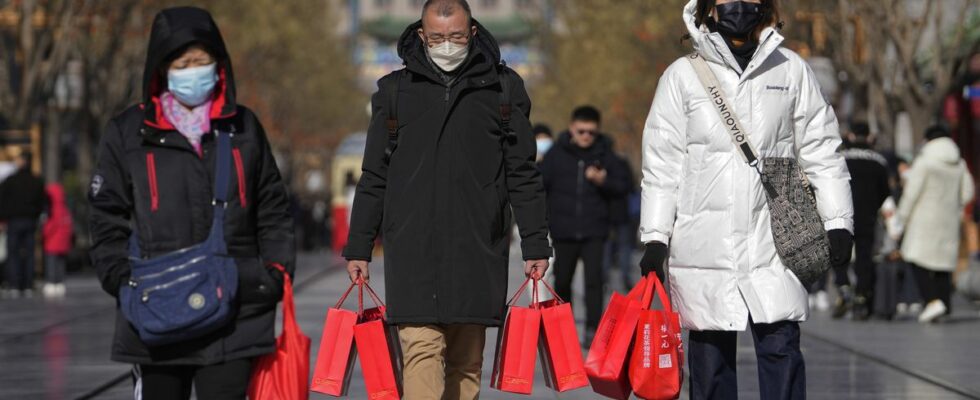Health restrictions and the real estate crisis have crushed Chinese growth. China experienced one of its weakest growth in four decades in 2022, according to official figures released on Tuesday. The Asian giant has followed for nearly three years a strict health policy called “zero Covid”, which has allowed the population to be largely protected from Covid-19.
These draconian measures, which were based on confinements as soon as positive cases were discovered, travel restrictions and generalized screening tests, have seriously disrupted production and supply chains. Many factories and businesses were to close overnight for a handful of Covid-19 cases, while the Chinese limited their outings and leisure activities to avoid finding themselves in contact.
One of the weakest for forty years
These measures were finally lifted in early December. But the decision has led to an exponential increase in the number of Covid patients, which is a major obstacle to recovery. In this context, China saw its gross domestic product grow by 3% in 2022, announced the National Bureau of Statistics (BNS). This pace, which would make many the envy of most major economies, is nonetheless one of the lowest for forty years for the Asian giant.
A group of economists polled by AFP anticipated a more pronounced slowdown (+2.7%). Beijing had set itself a target of 5.5%, a rate already much lower than the performance of 2021, when China’s GDP had grown by more than 8%, driven by the recovery after the first epidemic wave. Growth in 2022 is the weakest since the contraction of 1976 (-1.6%) and the slowdown of 2020, the first year of the pandemic (+2.3%).
The “uncertainties” weigh
In the fourth quarter, Chinese growth slowed over one year (+2.9%), compared to 3.9% in the previous quarter. “This deceleration reflects the pressure exerted on the economy by the uncertainties” linked to health restrictions and then to the end of zero Covid, notes economist Chaoping Zhu, of the American investment bank JP Morgan. From one quarter to another, a more faithful criterion of comparison for the economy, the pace is stable (+3.9%).
In 2022, the economy “faced storms and choppy waters” globally, NBS official Kang Yi said. “The foundations for the domestic recovery are not solid,” he admitted to the press. In December, retail sales, the main indicator of household spending, were thus down again (-1.8% over one year), after a plunge in November (-5.9%). For its part, industrial production fell last month (+1.3% over one year), after rising 2.2% in November.
Population decline
The population of China, the most populous country in the world, has also fallen in 2022, a historic first since the beginning of the 1960s. This fall looks set to last, perhaps until the end of the century, according to demographers, which will severely affect the economy and the pension system. For its part, the unemployment rate fell slightly in December (5.5%), against 5.7% a month earlier.
However, this figure paints an incomplete picture of the economic situation, since it is only calculated for urban dwellers. It effectively excludes the millions of migrant workers, who are particularly vulnerable to the economic downturn. Their situation has been exacerbated by a crisis in real estate, a sector which, along with construction, represents more than a quarter of China’s GDP and is a major pool of low-skilled jobs. Real estate has suffered since 2020 from a tightening by Beijing of the conditions of access to credit for real estate developers, in order to reduce their indebtedness.

